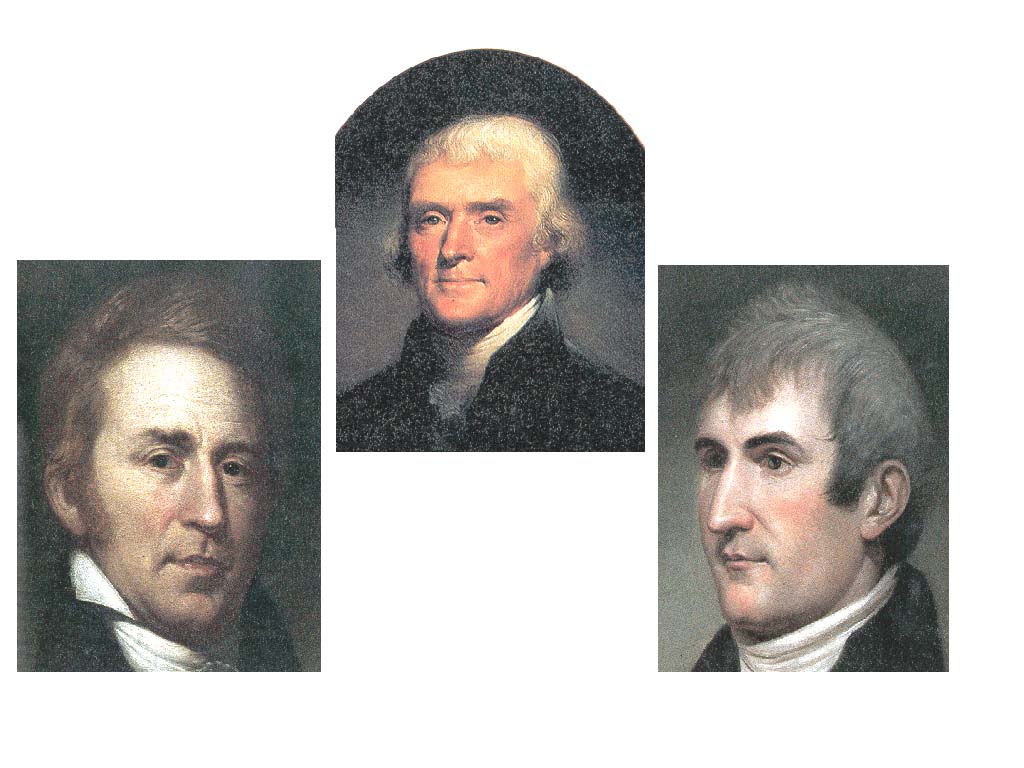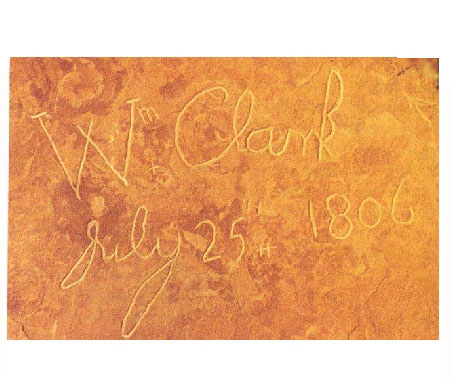

 | WILLIAM CLARK: In 1804, following his successful completion of the Louisiana Purchase, President Thomas Jefferson (center) commissioned William Clark (left) and Meriwether Lewis (right) to lead an expedition up the Missouri River to the Pacific coast. Jefferson had several goals for Lewis & Clark's Corps of Discovery. Jefferson wanted to determine if there was an all water route through the Rocky Mountains; he saw a need to establish an American presence in the West; and, being an avid natural historian, he wanted Lewis & Clark to record all that they could about the animals, plants, climate, people, and geography of the West, and to return as many plant and animal specimens as possible. |
 | On their return to the East, after two grueling years, Clark's party was descending the Yellowstone River by canoe. Just east of the modern city of Billings, Montana, at the site marked in red on the satellite image of Montana shown at left, Clark made the following entry in his journal for Friday, July 25th, 1806 (the spelling and punctuation are Clark's): |
 | "dureing the time the men were getting the two big horns (big horn sheep) which I had killed to the river I employed my self in getting pieces of the rib of a fish which was Semented within the face of the rock this rib is about 3 inches in Secumpherence about the middle it is 3 feet in length tho a part of the end appears to have been broken off..... I have several pieces of this rib" |
 | The site at which Clark found this fossil rib is in an area where the dinosaur-rich Hell Creek Formation still yields abundant dinosaur remains. Judging from the size of Clark's fossil, and because the Hell Creek Formation does not contain remains of large fish or other large marine vertebrates, what Clark was describing could only have been a dinosaur rib. If so, Clark was the first person to describe the excavation of a dinosaur specimen. Unfortunately, the rib has been lost, so there is no confirmation of this at present. On the same day that he found the rib, Clark etched his name and date (left) in the soft sandstone of nearby Pompey's tower, a prominent Montana landmark, which he named after the infant son of Sacajewea - the Shoshone woman who had accompanied the expedition, and who several times had saved them all from disaster. |